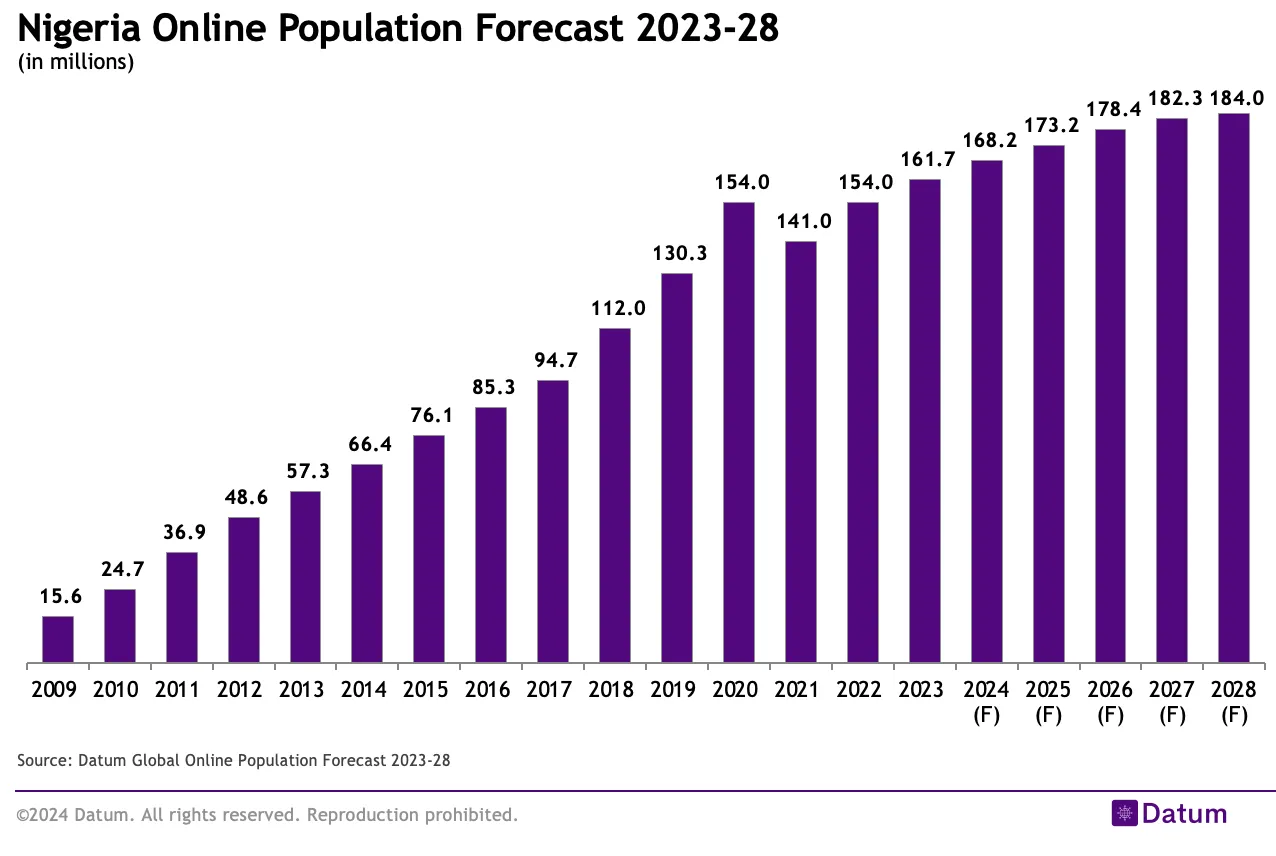Table of Contents
In 2023, Nigeria had approximately 161.7 million internet users, representing an internet penetration rate of 73.1% of the total population.
In Nigeria, the median mobile internet connection speed via cellular networks was 19.84 Mbps, experiencing a growth of 2.47 Mbps (14.2%) over the twelve months leading up to the start of 2023, according to Ookla's data. Meanwhile, the median fixed internet connection speed in Nigeria was 11.84 Mbps, which saw an increase of 1.78 Mbps (17.7%) during the same period.
Nigeria's densely populated urban centers, such as Lagos, Kano, and Ibadan, are expected to contribute to the surge in online users. As these cities continue to develop, their residents will demand better digital infrastructure and connectivity
These statistics indicate improvements in both mobile and fixed internet speeds in Nigeria. The increase in internet speeds can contribute to enhancing digital experiences for users and supporting the development of online services and applications. However, there is still potential for further enhancement to bridge the digital divide and ensure more equitable access to reliable and high-speed internet across the country.
Definitions
Online population. Total number of individuals or users who have access to the internet and regularly use it for various purposes, such as communication, information gathering, entertainment, shopping, and more (at least once in a month)
Additional Notes
Release Date: April 2024
Region: Nigeria
Time Period: 2009 to 2028
Author: Datum Research Team
Source: Datum Global Online Population Forecast 2023-28
Methodology
Datum Forecast is a comprehensive, data-driven solution that offers invaluable insights into the factors shaping various industries. By providing a quantitative framework for assessing market drivers and inhibitors, it empowers clients to make well-informed investment decisions and develop strategic plans that capitalize on growth opportunities while mitigating potential risks.
To forecast upcoming market trends and opportunities, our market sizing and forecasting team makes use of statistical models, time series analysis, and other forecasting approaches.
To create precise estimates, we take into account elements like historical data, market drivers, economic indicators, consumer behaviour, and the competitive environment.
Our forecasting and trend analysis enable businesses to anticipate market shifts, adapt their strategies, and stay ahead of the competition.
Our dedicated team produces over 30 forecasts annually, enabling a comprehensive understanding of global market trends.
The full report is available on a commercial basis upon request to hello@datumintell.com.









